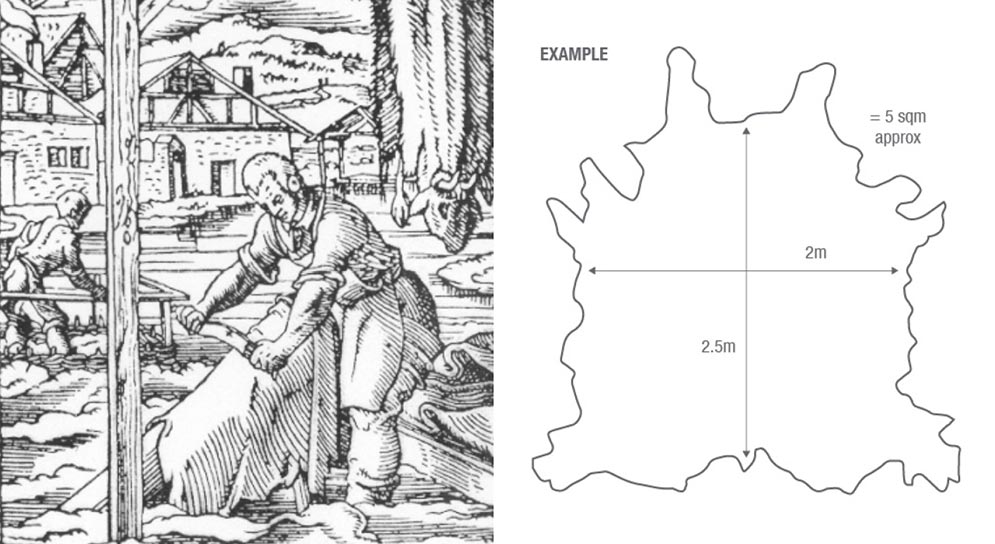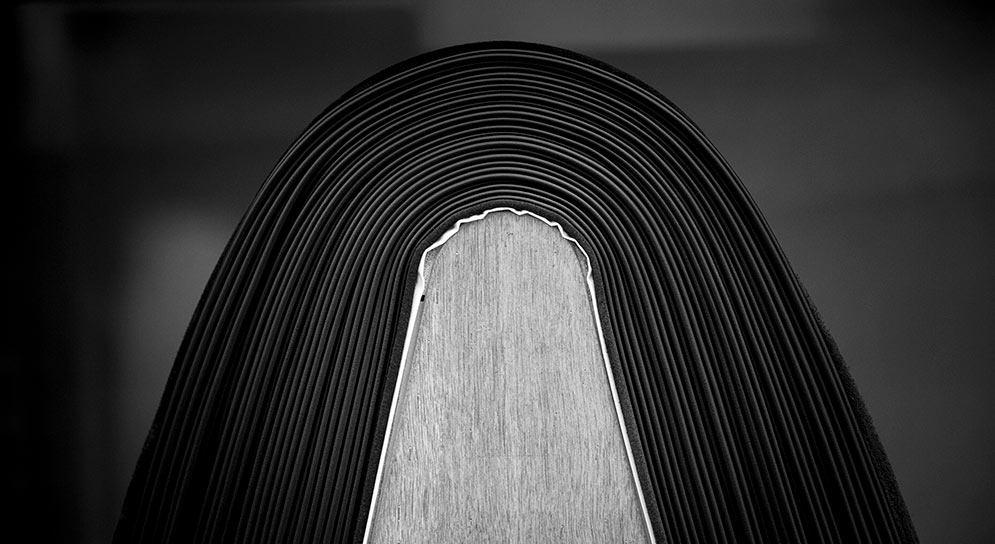
One of the main challenges of working with leather is having a comprehensive understanding of its unique properties. Instyle has spoken to two leading upholsterers, Ensight Furniture and The Seatery, to create this introductory guide so clients can embrace leather’s natural attributes and achieve the best results.
What is Leather?
Leather is a luxurious natural material created by the ancient process of tanning animal raw hides and skins. This artisanal process can take four to five weeks to transform the raw hide into an exquisite finished product. Leather is generally sold as a full hide with an average hide size in square metres, based on the width and length of the hide. As a natural product, hide sizes will vary and “each hide is unique and behaves differently” says Steven Schuemann from Ensight Furniture.

What are the benefits of leather?
Quality leather is an elegant and practical choice that offers an exclusive natural element of raw beauty to any furniture piece. As well as an unparalleled aesthetic, quality leather is easy to clean and maintain, provides excellent comfort and long-lasting durability that will stand the test of time. “Leather also has the benefit of being a byproduct of the meat industry, therefore reducing waste” says Steven.

Why does the cost of leather vary so much?
The price of the finished leather is based on its quality, leather type and the cost of the raw hide. Aniline leathers are the finest quality and the most expensive, with only the top 3% of raw hides selected for this grade that emphasises all natural markings. In contrast, Corrected Grain leathers are the least expensive as they utilise lesser grade raw hides and require more processing, resulting in a more uniform finish.
European hides tend to be the most expensive on the market. Their cattle are generally ‘cleaner’ as they are better protected, raised in small herds on small farms with no barbed wire and no branding. The cattle are housed in barns during the winter and are washed regularly.
This contrasts to Australian cattle, which are raised in large herds and free to roam in harsh terrain and climate. At a lower cost, their raw hides tend to exhibit tougher skin with more damage, being suited to more processed grades of leather
You can learn more about the different leather types here, including Aniline, Semi-Aniline and Corrected Grain.

What is the best way to mark out and cut hides?
Marking out and cutting leather hides is a skilled and masterful job. Experienced upholsterers have the expertise and specialised knowledge of all leather types. This allows them to select the right sections of the hide for durability and appearance whilst maximising yield and minimising wastage.
Rob Horn from The Seatery says “You have to allow for stretch in different parts of the hide, whilst working around blemishes in a way that minimises wastage and maximises the visual outcome”.
Instyle, Ensight and The Seatery share their top tips:
- Roll out all the hides to inspect each hide for natural markings and variations* before marking out and cutting.
- Always mark and cut the largest pieces and critical components first.
- Place accurate furniture piece templates on the hide to evaluate the cutting plan.
- The critical areas such as the seat cushion and back tend to come from the most desirable section of a cowhide, which is the rectangular area running lengthwise from the base of the neck to the butt and on either side to the beginning of the belly hide. A visible backbone area is also usually avoided.
- It is important to be aware of areas with greater stretching. The belly sections are more pliant and stretch readily. As they do not recuperate well enough they should not be used for cushions as ‘pillowing’ can occur, rather cuts from this section of hide should be upholstered onto the fixed areas or ‘carcass’ of the lounge.
- Leftover sections containing marks and the flank, which often reveals dung marks, should be cut for use on non-visible areas of the furniture piece.
“Another consideration to maximise yield is to panel sections of a furniture piece to reduce wastage and save costs. The smaller the panel, the more you’ll be able to get out of a hide” says Steven.

What is the ideal leather thickness to use?
The ideal leather thickness will vary depending on the application and furniture style. Steven says “At times, people can specify the incorrect hide thickness for application. For lounge type seating, we always recommend 1.1 – 1.3mm leather thickness, as thinner leathers can show the inner materials such as feather cushions and foam joins”.

Which leather type is suitable for light-filled rooms?
Colour fading from direct sunlight affects all leathers, therefore we recommend to avoid placing your leather furniture in direct sunlight. Particularly the most natural Aniline grade as they do not have any protective coating or pigment on the surface and are more susceptible to fading from sunlight exposure. The types of leather more resistant to fading are Semi-Aniline, Pigmented and Corrected Grain leathers as they will generally fade more gradually and less dramatically than Aniline leathers.

* As a natural material, leather proudly displays natural characteristics as well as grain and colour variation
Natural Characteristics
Aniline and Semi-Aniline leathers will always bear the hallmarks of its natural origin and provides the comfort only a natural product can provide. These characteristics do not detract from the quality, durability or strength of the leather. These are signs that discerning owners cherish when buying leather and are also an assurance that they are purchasing natural leather and not the lesser quality colour-coated, painted or corrected grain leather. The backbone usually leaves a visible mark down the spine of the hide, whilst other features will occur randomly throughout. Any unhealed damage is usually cut from the hide.
Grain Variation
Leather grain and texture varies greatly across individual hides. From loose and pronounced in the belly and flank, which has more stretch and give, to relatively tight and fine across the backbone.
Colour Variation
Due to the varying grain structure mentioned above, dyes and finishes penetrate to different degrees in different parts of the hide, giving an attractive rustic aesthetic.
We would like to thank Steven Schuemann from Ensight Furniture in Sydney and Rob Horn from The Seatery in Melbourne for sharing their expertise in leather upholstery.
By Victoria Barnes and Tracy Mak
